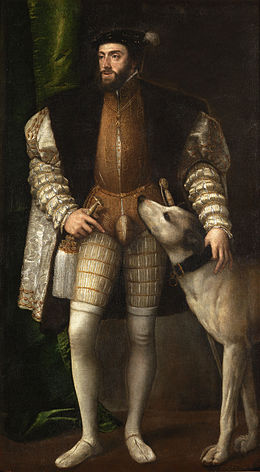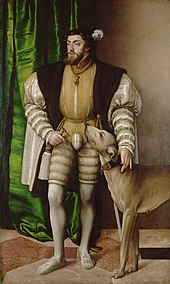
Tiziano Vecelli or Vecellio, known in English as Titian, was an Italian (Venetian) painter of the Renaissance, considered the most important member of the 16th-century Venetian school. He was born in Pieve di Cadore, near Belluno. During his lifetime he was often called da Cadore, 'from Cadore', taken from his native region.

The Prado Museum, officially known as Museo Nacional del Prado, is the main Spanish national art museum, located in central Madrid. It is widely considered to house one of the world's finest collections of European art, dating from the 12th century to the early 20th century, based on the former Spanish royal collection, and the single best collection of Spanish art. Founded as a museum of paintings and sculpture in 1819, it also contains important collections of other types of works. The Prado Museum is one of the most visited sites in the world and is considered one of the greatest art museums in the world. The numerous works by Francisco Goya, the single most extensively represented artist, as well as by Hieronymus Bosch, El Greco, Peter Paul Rubens, Titian, and Diego Velázquez, are some of the highlights of the collection. Velázquez and his keen eye and sensibility were also responsible for bringing much of the museum's fine collection of Italian masters to Spain, now one of the largest outside Italy.

Pedro de Orrente was a Spanish painter of the early Baroque period who became one of the first artists in that part of Spain to paint in a Naturalistic style.

Friar Juan Bautista Maíno, or Mayno was a Spanish Baroque painter.
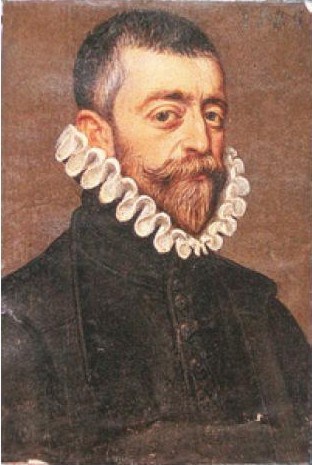
Felipe de Liaño was a Spanish painter. Antonio Palomino would dubbed him Little Titian.
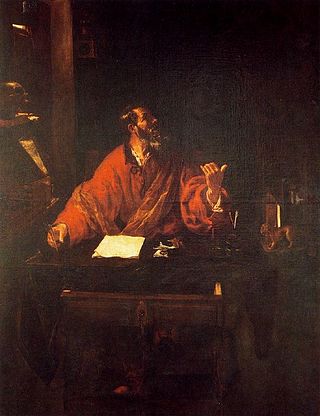
Juan Ribalta was a Spanish painter of the Baroque period. He was born and died in Valencia. His father, Francisco Ribalta, was a famous painter, active in the style of Caravaggio. Some sources said he was born in Madrid and later moved to Valencia. His mother Inés Pelayo died in 1601. Juan's works and style are similar to that of his father. He later painted Saint Sebastian at the Valencia Cathedral in 1616, later the small Adoration of the Shepherds and St. Peter, he also painted portraits including the poet Gaspar de Aguilar.
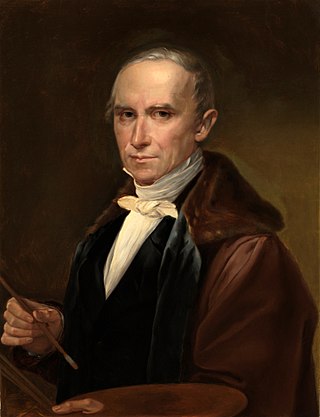
José Sotero de Madrazo y Agudo was a Spanish painter and engraver; one of the primary exponents of the Neoclassical style in Spain. He was the patriarch of a family of artists that included his sons Federico and Luis; and his grandsons, Raimundo and Ricardo.
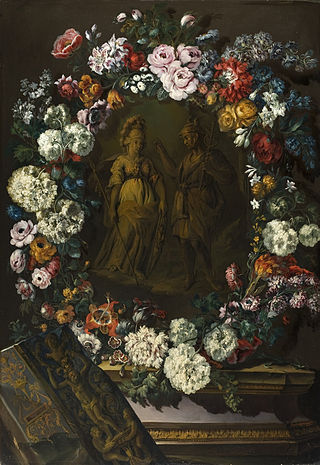
Benito Espinós was a Spanish painter who specialized in floral still-lifes and ornamentation.

The Colossus, is known in Spanish as El Coloso and also El Gigante, El Pánico and La Tormenta. It is a painting traditionally attributed to Francisco de Goya that shows a giant in the centre of the canvas walking towards the left hand side of the picture. Mountains obscure his legs up to his thighs and clouds surround his body; the giant appears to be adopting an aggressive posture as he is holding one of his fists up at shoulder height. A dark valley containing a crowd of people and herds of cattle fleeing in all directions occupies the lower third of the painting.
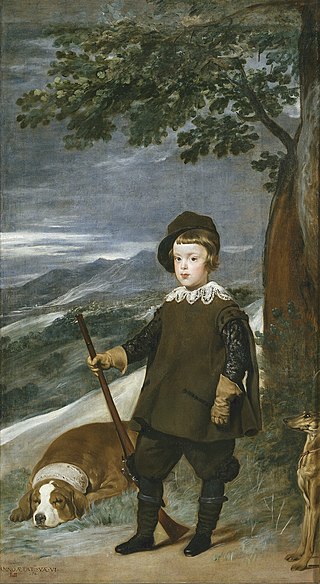
Prince Balthasar Charles as a Hunter is a 1635 portrait of Balthasar Charles, Prince of Asturias by Diego Velázquez. It is now held at the Museo del Prado.

Portrait of Pablo de Valladolid is a portrait painted around 1635 by Diego Velázquez of Pablo or "Pablillos" de Valladolid (1587–1648), a jester and actor at Philip IV's court from 1632 until his death. It is now in the Museo del Prado, to which it was moved in 1827.

José de Cieza (1656–1692) was a Spanish painter.

The Adoration of the Magi is a very large oil painting by the Flemish Baroque painter Peter Paul Rubens. He first painted it in 1609 and later gave it a major reworking between 1628 and 1629 during his second trip to Spain. It is now in the Museo del Prado in Madrid.

Antonio Ponce was a Spanish Baroque painter who specialized in still-lifes and garlands.

The Spanish royal collection of art was almost entirely built up by the monarchs of the Habsburg family who ruled Spain from 1516 to 1700, and then the Bourbons. They included a number of kings with a serious interest in the arts, who were patrons of a series of major artists: Charles V and Philip II were patrons of Titian, Philip IV appointed Velázquez as court painter, and Goya had a similar role at the court of Charles IV.

The Infanta Isabel Clara Eugenia in the Mariemont Park is a large oil on canvas painting by Flemish artists Jan Brueghel the Elder and Joos de Momper. It was painted in the first quarter of the 17th century. The painting is kept in the Museum of Prado in Madrid.
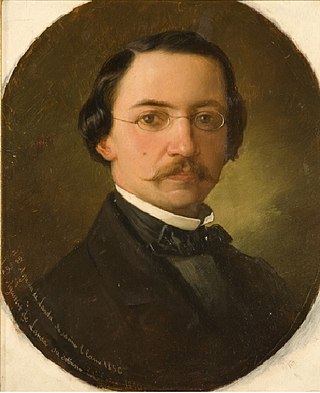
Eduardo Cano de la Peña was a Spanish painter in the Romantic style; specializing in historical scenes.

Children Eating Grapes and a Melon is a 1645-1650 oil on canvas painting by Bartolomé Esteban Murillo, now in room XIII of the Alte Pinakothek in Munich. Along with religious works, realistic and naturalistic genre scenes like this form one of the most oft-repeated themes in the artist's oeuvre, often centred on children, as also seen in Children Playing Dice and The Young Beggar.
